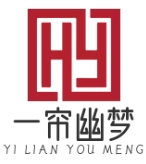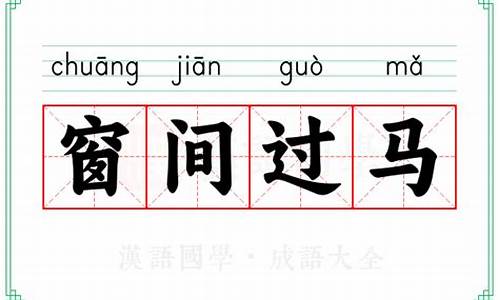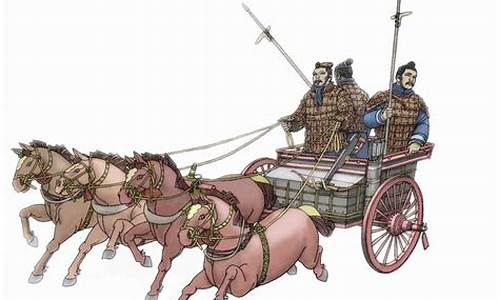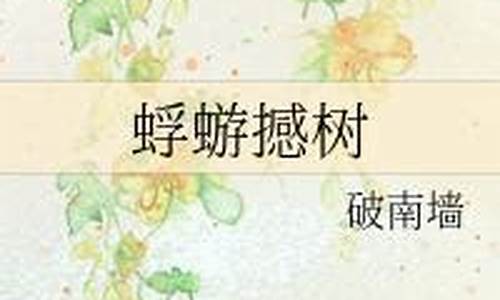充耳不闻用法-充耳不闻英语
1.英语作文 龟兔赛跑 急需!!!!!
2.请英语高手进来翻译一下
3.pressure 与stress 有什么区别
4.与身体躯干相关的英语习俗put one's back into something
5.英语国家文化常识书
英语作文 龟兔赛跑 急需!!!!!

After the tortoise than the rabbit said, proud of all the animals do not post. Some people say it, it is proud to say: "even the legs of rabbits but I have run, what do you count?"
Rabbit unconvinced everyday practice run, a decision再跟turtle Yijuecixiong. Training for a few days, rabbits in the "Forest Journal," to the war on the turtle. Turtle accepted.
Unwittingly race that day, turtles and rabbits are standing on the starting line. With the "bang" sound of rabbits and turtles are out of the starting line, and soon, the rabbit would Shuaixia the tortoise, the lead.
Rabbit Bozhaobozhao suddenly heard shouting "help" the sound of a rabbit stopped, only a small Lark fell into the sea, has been quick to die, rabbits think: not refusing. Will not hesitate to jump into the river, although the river is not deep, fast-flowing, rabbits will not waterborne, it can only small Lark difficult to travel to. It so happened that can run from waterborne the tortoise, rabbit busy shouting: "turtle, Come Back on the Skylark." Turned a deaf ear turtle, I thought: If I go into the sea will be lost rabbits, no doors! End also want to run again. Rabbit had rescued a small Lark, which has wasted a lot of time, rabbits rush farewell small Lark, Batuijiubo.
When the rabbit get to the end, the host elephant Baba is pegged to the turtle medals? Turtle see rabbits, proudly said: "Who let more nosy, deserves!" Was exactly at that time, sounded a loud voice: "medal should belong to the rabbit!" This is small Skylark. Qi asked why everyone, small Lark to the situation have said Yiwuyishi out. "Yes, the rabbit should be a first!" "Gold medal to the rabbit!"…… Elephant Baba nodded, and the gold medal to hang rabbit.
Finally turtle with a high low in the first
经过乌龟比兔子说,骄傲所有的动物不要张贴。有人说,它是自豪地说: “即使是兔腿,但我看,你怎么指望? ”
兔信服日常实践来看,决定再跟乌龟Yijuecixiong 。训练了几天,兔子的“森林日报” ,战争的海龟。龟背接受。
不知不觉比赛那一天,乌龟和兔子都站在起跑线上。随着“砰”的声音兔子和乌龟是从起跑线上,并很快将Shuaixia兔子的乌龟,带头。
兔Bozhaobozhao突然听到喊“帮助”的声音停止兔,只有一小云雀坠入海中,已快了,兔子想:不能拒绝。将毫不犹豫地跳进河里,河水虽然不深,快速流动,兔子不会水性,它只能小云雀难以前往。偏巧,可以从水的乌龟,兔忙喊道: “乌龟,回来的云雀。 ”充耳不闻乌龟,我想:如果我进入大海将失去兔子,没有门!为此也想再次运行。兔救出了一个小云雀,这白白浪费了时间,兔子匆忙告别小云雀, Batuijiubo 。
当兔子去年底,东道国大象巴巴挂钩海龟金牌?甲鱼见兔子,自豪地说: “是谁,让更多管闲事,值得! ”正是在那个时候,发出了响亮的声音: “金牌应该属于兔子! ”这是小云雀。齐问,为什么每个人,小云雀的局势表示Yiwuyishi了。 “是啊,兔子应该是第一次! ” “金牌兔! ” ... ...大象巴巴点点头,金牌挂兔。
最后龟高低第一
请英语高手进来翻译一下
@@@@@
1、I turned away and looked out of the window. 我转过脸望向窗外。
2、don't turn your anger on the children. 不要对小孩子发火。
3、he turns 20 in june. 到六月他就满20岁了。
4、she turned against her old friend. 她敌对了她的老朋友。
5、why did he turn down your invitation. 为什么他拒绝了你的邀请呢?
6、the job turned out to be harder than we thought 工作变得比我们预计的困难了。
7、he turned the business over to his daugther.他把事业转交给了他女儿。
8、he stopped his car ,took off his seat belt and came out. 他停下车,揭开安全带就出去了。
9、she was taken on as a trainee. 她作为新人被录用了。
10、he took over the company. 他接管了这家公司。
11、the table takes up too much room. 这个桌子太占地方了。
12、fish takes in oxygen through their gills. 鱼用腮呼吸。
以上请翻译成中文,谢谢!
1、take french leave 不辞而别
2、a stony heart 铁石心肠
3、at one's fingertips 唾手可得
4、have a hand like a foot 情同手足
5、show one’s color 还以颜色
6、return good for evil 以德报怨
7、shut one's eyes to 视而不见
8、talk black into white混淆是非
9、turn a deaf ear to 置若罔闻
10、turn over a new leaf 从头开始
以上的请翻译成成语,谢谢
--其中第5个成语,我拿不准,请教其他高手
pressure 与stress 有什么区别
解释:以上两个词中文意思相近,物理学上,stress指将物体朝两个不同方向牵引的力,pressure指将物体朝同一方向推的力。stress指使人感到内心痛苦的各种原因,pressure则指强制或促使某种行动的外部压力。因此stress意思偏于精神方面的压力,pressure意思偏于物理方面的压力。
A body collapses if pressure exceeds stress. Though stress, or internal resistance is due to external forces, or pressure, it needs to be equal to it. (当外部压力大于材料本身的张力时,物体会垮塌。尽管张力(内部抗压力)是因为外力(外部压力)而产生,但这两个力需相等。)
在引申词义上,stress 和 pressure 也同样有词义和使用的差别。stress 用于精神压力。尽管这种压力可能因外部事物造成的,但却是自身内部的压力。pressure 则是造成 stress 的外部压力,如工作压力,人际关系压力,经济压力等等。这些都有可能造成人的精神压力,即 stress。
例:Stress may be caused by the pressures of examinations or work deadlines. (精神压力可能是因考试或工作期限的压力所造成的。)
The landlord is putting pressure on us to move out.房东强迫我们搬走。《牛津英语习语词典》
If the ministry won’t listen, we’ll have to bring some more pressure to bear.如果该部对我们的话充耳不闻,我们就得施加更大的压力。《牛津英语习语词典》
与身体躯干相关的英语习俗put one's back into something
1.1与头部相关的英语习语举例
头(head)被认为是人体最重要的部位.它是脑的所在处.因此经常和思想智慧相联系.有句习语体现这一特征:Two heads are better than one(一人计短,二人计长).这句习语正好知中国俗语"三个臭皮匠顶过一个诸葛亮“有异曲同工之妙。有时候夸人家说话很中肯,一针见血,也可用与头相关的英语习语的句子来表达:You hit the nail on the head。Head还有另外一些常见的习语,例如:swelled head(自满),dead head(脑筋),long head(先见之明),come to a head(到了危急关头),have one's head in the clouds(想入非非),have one's head above water(不负债),lose one's head(惊惶失措),be off one's head(疯狂),on your own head be it!(出了问题你负责!),stick one's head in the sand(逃避现实)等。
与智慧联系更密切的是脑(brain)。这个词用单数复数都可以指思维能力。例如:You have a lot of brains(你很有头脑),You have a good brain(你很聪明)。聪明人也会遇到难题。这时就要rack your brains(绞尽脑汁)去思考了。我们有时还会见致到以下习语:brain drain(人才流失), brain trust (智囊团),brain storm(灵感) brain wave(计上心头),have something on the brain(念念不忘),pick someone's brains(利用某人的学识)等.
与汉语一样,英语的脸(face)与"面子""尊严"相关.像lose face(丢脸), save face(挽回面子)等.但也一些 其它的习语,例如:About face!(向后转!),pull a long face (拉长脸),set one's face against(坚决反对) ,fall flat on one's face(一败涂地),fly in the face of (公然反对)put a bold face on it (若无其事),keep a straight face(一本正经)show one's face(露面)等.face也常用作动词,例:Let's face it。让(我们去面对。) ,Let's face the music。(让我们面对现实吧。)等.
在脸上的器官,眼睛(eye)很宝贵.因此我们叫人当心,可以说:"Mind your eye!"与eye相关的习语大部分和"看"或者"眼"相关,例如:Avarice blinds our eyes(贪欲障人眼),Beauty lies in lover's eyes(情人眼里出西施),clay eyes on(惊奇地看),can,t take one'eyes off (禁不住看),keep one's eyes open for...(留心),close one's eyes to(无视),see eye to eye with sb (与某人的看法一致),turn a blind eye to(视而不见),have an eye for(对...有识别力),keep an eye on(照看),see something with half an eye(一目了然), in one's mind's eye(在心中)。它有时也会有一些特别的用法,例如,Suspicion has double eyes(疑心生暗鬼),make eyes(暗送秋波),all my eye(胡说八道),pull the wool over someone‘s eyes(蒙骗某人),in a pig's eye(绝不可能),the apple of one's eyes(掌上明珠)等。
和眼睛一样,耳朵理所当然和听有关.例如:The music is easy on the ear(这首曲子很好听),I'm all ears(我洗耳恭听).In at one ear and out at the other(一耳进,一耳出),My ears are burning(我耳根发热)。汉语有隔墙有耳的说法,英语中可以说:"Walls have ears "或者"pitchers have ears". 还有一些其它和耳朵有关的习语,例如:Little pitchers have big ears(小孩子耳朵尖).The ass wags his ears(傻瓜总爱装聪明),turn a deaf ear to (充耳不闻),close one's ear to(充耳不闻),smile from ear to ear(满面笑容) ,keep one's to the ground(保持警觉),play it by ear(随机应变)have someone's ear(对某人有影响),set pople by the ears(使人们争吵),up to one's ears in something( 忙得不可开交)等.
说到鼻子(nose),中国人会说"牵着某人的鼻子走“,“ .英语中也有类似说法:lead sb by the nose.如果要说”嗤之以鼻,英语中就可用“turn up one's nose at somebody or something“来表达。但英语中的许多与鼻子相关的习语中文却不常见,例如:他们用”as pain as the nose on one's face“来表示"清楚明白",用”keep one's nose out of“来表示"不管闲事", 用”turn up one's nose at“来表示"瞧不起",用”keep one's nose clean“来表示"避开麻烦",用”keep one's nose to the grindstone“来表示“努力工作”,用”take a nose-dive“来表示“暴跌”,用”pay through the nose“来表示“付很大一笔钱”,用”look down one's nose at someone“来表示“瞧不起某人”用”poke one's nose into someone's business“ 来表示“干涉别人的事情” ,用”put someone's nose out of joint“来表示“使某人生气”用"follow one's nose”来表示"凭直觉"等。
嘴(mouth)的主要功能与"说"相关,以下三种表达都是"闭嘴"的意思:
Shut your mouth!
None of your mouth!
Button on your mouth!
而bad mouth是"诽谤"的意思,big mouth是" 长舌妇",make one's mouth water是“令人垂涎欲滴”,put words into someone's mouth是"认为是某人说的“,take the words out of someine's mouth是“讲出心里话”。但以下两个句子与"说"扯不上关系:You are down in the mouth(你神色沮丧).
The horse is light in the mouth(这匹马很难驾驭). 1.2与身体躯干相关的英语习语举例
Body一词既可指泛指整个身体,也可指特指身体躯干。在身体躯干各部位词中,与背部(back)有关的习语最常见,而且含义各有不同,例如:have not a shirt to one's back(非常贫穷),break the back of a job(完成一项工作的最艰巨的部分),be glad to see the back of someone (高兴某人离去),be on one's back(卧病在床),get one's back up(发火),put one's back into something(下功夫做某事) ,turn one's back on someine(拒绝帮助某人),with one's back to(陷于绝境),behind someone's back(暗地里),put someone's back up(触怒某人)等。
同样,与颈(neck)相关的习语也含义各有不同.例如:neck or nothing(拼命),get it the neck(大受其罪),stick one's neck out(担风险)。 catch/get it in the neck(惩罚某人)等。
1.3与四肢相关的英语习语举例 不不仅是头部,身体的四肢(limbs)也与许多习语相关,像手(hand): Many hands makes light work(人多好办事).
Abird in hands is worth two in the bush(一鸟在手胜似二鸟在林).
Don't bite the hand that feed you(别恩将仇报). 其实与手相关的习语和大部分和中文相似,例如fresh hand(新手),old hand(老手),short or hands(人手短缺),hand in hand(联合),give sb a hand(助人一臂之力),have one's hands full(应接不暇),win hands down(轻而易举)等. 但有时也不能就这样来理解.例如“We give him a big hand”不是"狠狠打他一巴掌",而是"我们给他热烈的掌声".
手有五指,因此"击掌"就可以说:Give me five。(祝福我)来表达.与手指(finger)相关的习语有:have a finger in the pie(与某事有关),burn one's fingers(自讨苦吃),turn someone round one's finger(左右某人)have at one's finger tips(精通)等。五指中,拇指(thumb)是粗壮有力的,因此文化中都有用"thumb up"(顶呱呱)来表示赞赏,用"thumb down"(糟透了)来表示鄙视,但是当你听到"Your fingers are all thumbs"可别以为是夸你的,它的意思是"你很笨拙".
与arm(手臂)相关的习语有两句不能忽视: Justice have long arms(天网恢恢,疏而不漏 ),Every coin has long arms(要一分为二).Arm有时也用作动词,意为"武装" ,像armed to teeth便是"全副武装". arm有时也和腿(leg) 一起用,像可以用“it costs an arm and a leg”表示“很昂贵”。
再看几个与leg相关的习语:Show a leg.(起床),lies have short legs.(谎言站不住脚),not have a leg to stand on(理屈词穷),pull someone's leg(哄笑以取笑某人), on one's last legs(将),get one's see legs(习惯海上生活),use legs and have legs(越干越行)等。
与脚(foot)相关的习语也很多,例如:You must stand on your own foot(你要自力更生).He has just find his feet(他刚学会走路).The shoe is on the other foot(情况完全不同),foot the bill (付帐),put one's foot down(坚定立场),put one's foot in it(说错话或做蠢事),fall feet of(幸运),keep one's feet(保持平衡),put one's best foot forward(竭尽全力),have one foot in the grave(行将就木)等。
有一个部位"heel"(脚后跟)不能不提及.“Achines' heel”是"致命弱点",on the heel of是“尾随”,cool one's heel 是“久等” show a clean pair of heels和take to one's heels都是"溜之大吉".当我叫"Keep to heel !"或者"Come to heel!"你可别乱答应,因为我是叫我的狗"紧紧跟上我".
1.4与内部器官相关的英语习语举例
说到内部器官,首先想到的是"心"(heart)和一句谚语:
"Nothing is difficultif you put your heart into it(世上无难事,只怕有心人).中国的传统中医的"五劳七伤"理论在英语习语中也得到体现:A light heart lives long(不恼不愁,活到白头).。而在英语中,heart 还经常指"信心"或者"勇气".例如: Don't lose heart!(别灰心),Take heart!(鼓起勇气).以下与heart相关的习语很常用:Have a heart!(发发慈悲!),at heart(实质上),heart and soul(全心全意),learn something by heart(背诵),take something to heart(深受影响),have a heart of gold(宽宏大量的),have a heart of stone(铁石心肠的),have the heart to(忍心),after one's own heart(正中下怀),in one's heart of hearts(在思想深处),have one's heart in one's boots(失望),have one's heart in one's mouth(害怕),have one's heart in the right place(好心好意),set one's heart on something(渴望得到),break someone's heart(使某人绝望)等。
除了heart,血(bood)的习语也不少,有句习语经常可以听到:Blood is thicker than the water(血浓于水).从这句习语中就可以知道blood和“血统”相关.因此Blue blood是”出身名门“。但有时它也和感情有关,例如:There is bad bood between them.(他们不和) ,in cold blood(蓄意地),warm one's blood(使某人兴奋),make someone's bood run cold(使人毛骨悚然)等。
这里不妨把骨(bone)列入内部器官。与bone相关的习语经常和“骨”没直接关系,像bone up on(加紧学习),a bone of contention(争论的原因), have a bone to pick with someone(对某人有争论),feel in one's bones that(确信),make no bones about doing something(对做某事毫不犹豫),make old bones(活到老),funny bone(幽默感),feel in one's bone(预感)等。
以下再列举几个由与内部器官相关的习语构成的句子:
The belly(肚子) is the truest clock(肚子是最准的钟)
You have the gall(胆)to do it(你居然有脸让我做这件事).
How could you stomach such rude words?( 你怎能容忍如此粗鲁的话?)
1.5 与人体其他部位相关的英语习语举例 人体其他部位词中,以“头发”(hair)为例:Keep your hair on!(保持冷静),a hair of the dog that bit ones(以少量酒解酒的方法),to a hair(完全地),not turn a hair(不动声色),let one's hair down(不拘小节),make someone's hair stood on end(使毛骨悚然),have someone by the short hairs(操纵某人)。从以上的习语可以看出,与相关hair的习语基本上用的是它的引申义或者比喻义。
1.6与多个部位同时相关的英语习语举例
其实,英语习语经常同时和两个或者两个以上的人体部位词相关.例如:
Treat the head when the head and treat the foot when the foot hurt ( 头痛医头,脚痛医脚).
What the eye doesn't see ,the heart doesn't grieve over(眼不见,心不烦).
Out of sight,out of mind(眼不见,心不想).
You may know a person's face but not his heart(知人知面不知心).
One good head is bettet than a hundred strong hands(强手百双莫如智者一人).
Eye for eye,tooth for tooth(以眼还眼,以牙还牙).
2.与人体部位词相关的英语习语的从语法结构形成特征
从以上众多例子中,从语法结构上可以归纳以下特征:
2.1,有部分词是以形容词修饰人体部位词形成的.以all 为例,all ear 是专心聆听,all eye是聚精会神,all legs是又瘦又长,all flesh是众生.再看其它形容词形成的例子:old hand 是老才,free gand是全权处理.private eye是么人侦探.poke face是不动声色,bad mouth 是诽谤,big mouth是爱说闲话,dead head是脑筋,long head是先见之明,open heart是坦诚,busy body是爱管闲事等.
2.2第二种是以人体部位词修饰名词.以名词brain为例,brain drain是人才流失,brain trust是智囊团,brain storm是灵感,brain wave是计上心头.再看其它名词的例子,tougue tuister是绕口令,face value是面值,eye shot是视野, skin game是骗钱,chin music是聊天,lea work是跑腿,blood debt是血债.
2.3第三种是动词修饰人体部位词. 以动词make为例,make faces是做鬼脸,make mouths是做嘴脸,make eyes是暗送秋波,make head是前进等.再看其它例子:save face 是保全面子,lose face是丢失面子,count heads是点名,knock head是叩头,rub elbow是与人交往,lose heart是灰心,take heart是鼓起勇气,tell noses是清点人数,give lip是讲硬旅顺,show leg是逃跑等.
2.4第四种是用介词(或其他)连接两个名词,一般是中间一个介词(或其他)连接两边两个完全对称的名词。例如,face to face是面对面,heart to heart是心贴心,nose to nose是面对面.shoulder to shoulder是肩并肩.再看其它例子:hand in hand是手拉手,arm in arm是臂挽臂,neck and neck是并驾齐驱,leg and leg是平分秋色,hand over hand两面三刀手交叉使用,eye for eye是以眼还眼,tooth for tooth是以牙还牙。
它还有一些变体,例如:
from hand to hand(用手传递), from mouth to mouth(口口相传), from generation to generation(代代相传),from head to foot(从头到脚), from top to toe(从头到脚), from hand to mouth(勉强煳口),heart and soul(全心全意),hand and foot(尽力), tooth and nail(竭尽全力),toe and heel(跳舞), flesh and blood(人类), head and ears(全身),hand to fist(齐心协力), hand over heels(倒栽葱)
2.5.按复杂习语分. 与人体部位词相关的英语习语中,有一部分是动词词组型习语。以下列举部分常见的与人体部位词相关的动词词组型习语:
lead sb. by the nose (牵者…的鼻子走),give sb. a hand(助人一臂之力),have one’s hands full(手头正忙),wash one’s hands off(洗手不干),stand on one’s own legs(独立),shrug one’s shoulders(耸肩)(表示惊讶或疑问),be armed to the teeth(武装到牙齿),close one’s ears to(充耳不闻),keep one’s ear to the ground(保持警觉),clap eyes on(惊奇地看),can’t take one’s eyes off(禁不住看),keep one’s eyes open for (注意留心),make sb’s mouth water(使...流口水),keep one’s nose out of(不管闲事),look sb. in the eye(直视),fall on deaf ears(没被听见),turn up one’s nose at(嗤之以鼻),keep one’s nose clean(避开麻烦),keep one’s nose to the grindstone(不停地工作),face the music(面对现实),set one’s face against(坚决反对),fall flat on one’s face(一败涂地),make sb’s hair stand on end (使…一败涂地),put one’s finger into other people’s pie(多管闲事),button up one’s mouth(闭嘴)等。
英语国家文化常识书
1.有关英语国家文化的书籍
1,《中国建筑史》乐嘉藻 这是中国国人出的第一部建筑史哦!怎么样都要捧场一下啊~虽说梁思成说这位老先生“既不懂建筑又不懂历史”……但是我看完觉得还是很值得一看的,乐先生把中国建筑按建筑形式和组件来分类介绍,配上若干插图,其特色倒是在文字上,还保留了文言文的余韵啊~读起来很有感觉又不会看不懂,不求甚解的话不用看注释,很快就可以翻完。
2,《华夏意匠》李允鉌 这本书……我还没看,但是绝对是值得推荐的好书!它对于建筑史的写法是属于比较特殊的。下面引用百度—— 《华夏意匠》涉及的学术范围非常广泛,除了直接相关的艺术和科技之外,还包括了历史、哲学、文学、政治、宗教等学科。
它的内容意涵深邃,语言亲切隽永,堪称中国建筑文化领域中的“传世之作”。对于建筑师、设计师、美术家、考古学家、历史学家等专业人以及从事一般文化艺术活动或爱好中国文化艺术的人士,它都是一本不可多得的参考书。
3,《美的历程》李泽厚 此书也是气势恢宏的一本好书啊!光看了介绍就使我热血沸腾—— 《美的历程》从宏观鸟瞰角度对中国数千年的艺术、文学作了概括描述和美学把握。其中提出了诸如原始远古艺术的“龙飞凤舞”殷周青铜器艺术的“拧厉的美”,先秦理性精神的“儒道互补”,楚辞、汉赋、汉画像石之“浪漫主义”,“人的觉醒”的魏晋风度,六朝、唐、宋佛像雕塑,宋元山水绘画以及诗、词、曲各具审美三品类,明清时期小说、戏曲由浪漫而感伤而现实之变迁等等重要观念,多发前人之所未发。
2.英语国家文化知识
英语中常见的肢体语言 to hold one's head high 昂首挺胸(表示趾高气扬) to shake one's fist 挥动拳头(表 *** 胁) to shake one's head摇头(表示不知道) to show a V sign 这一手势是祝愿胜利或庆祝胜利之意。
to wink at a person 向某人眨眼睛 to shrug one's shoulders 耸耸肩膀(表示冷淡或怀疑) to make a face 面部露出厌恶的表情 to keep(or have) one's fingers crossed 把中指叠在食指上交叉着,作十字状。这是暗中希望上帝保佑自己正在做的事成功。
to crook a finger 朝某人弯曲食指,是招人过来的意思 更有趣的是英美人用大拇指(thumb)做出许多不同的表示。
3.有哪些关于英语国家的文化背景的书
冲击波系列 有本是介绍英语国家文化背景的
英语专业八级人文知识(冲击波)
目录
第一部分 英语国家概况
第1章 美国概况
第2章 英语概况
第3章 加拿大概况
第4章 澳大利来概况
第5章 新西兰概况
第二部分 英语文学知识
第1章 美国文学
第一阶段 独立革命之前(十七世纪中期之前)
第一节 美国本土文学(美国印第安传统文学)
第二节 北美殖民时期文学(十六世纪末——十七世纪中)
第三节 清教思想的表述
第二阶段 独立革命时期(十七世纪中期——十八世纪末)
第三阶段 浪漫主义时期(十八世纪末——十九世纪中后期)
第四阶段 现实主义时期(十九世纪中期——二十世纪初)
第五阶段 现代主义时期(二十世纪初——)
第一节 现代诗歌
第二节 现代小说
第2章 英国文学
第一阶段 中古英国文学(8世纪——14世纪)
第二阶段 文艺复兴时期(14——17世纪中期)
第三阶段 新古典主义时期(十七世纪中期——十八世纪)
第四阶段 浪漫主义时期(十八世纪中期——十九世纪中期)
第五阶段 维多利亚时期
第六阶段 现代主义时期
第三部分 英语语言学知识
第1章 语言和语言学
第2章 语言学和音位学
第3章 形态学
第4章 句法学
第5章 语义学
第6章 语用学
第7章 语言演变
第8章 语言与社会
第9章 语言与文化
第10章 语言习得
第11章 第二语言习得
第12章 语言与大脑
4.英语国家文化知识
英语中常见的肢体语言 to hold one's head high 昂首挺胸(表示趾高气扬) to shake one's fist 挥动拳头(表 *** 胁) to shake one's head摇头(表示不知道) to show a V sign 这一手势是祝愿胜利或庆祝胜利之意。
to wink at a person 向某人眨眼睛 to shrug one's shoulders 耸耸肩膀(表示冷淡或怀疑) to make a face 面部露出厌恶的表情 to keep(or have) one's fingers crossed 把中指叠在食指上交叉着,作十字状。这是暗中希望上帝保佑自己正在做的事成功。
to crook a finger 朝某人弯曲食指,是招人过来的意思 更有趣的是英美人用大拇指(thumb)做出许多不同的表示。
5.求一些经典的有关英美文化的书藉
英语学习与英美文化浅谈 周 强 (太原师专外语系 030001) 摘要 语言与文化紧密相关。
本文摘录《大学英语》课本(文理科通用) 中的许多例句, 阐述了文化背 景在英语学习中的重要作用。本文不仅强调打好语言基础的重要性, 更注重提高英语学习者文化素质的 提高。
二者的结合对于提高运用英语的能力有很大的e68a84e799bee5baa6e997aee7ad9431333238646435帮助。 关键词 文化背景, 英语基础知识 大学英语教学大纲(非英语专业本科) 指出: 在打好语言基础的同时,“大学英语教学 还应有助于学生开阔视野, 扩大知识面, 加深对世界的了解, 借鉴和吸收外国文化精华, 提 高文化素质。
文化和语言有密切的联系, 一定的文化背景知识有助于促进语言应用能力的 提高。” 语言是社会现象, 是一定文化的载体。
虽然人类的思维没有什么不同, 但由于各个民 族生活的地理环境不同, 形成的历史不同, 社会制度, 宗教信仰、价值观念以及生活的习俗 不同, 因而各民族都有独特的文化, 反映民族文化的语言必然与外族语有差异。这种差异 不仅表现在描述同一事物时, 词汇、发音和语法结构的不同, 而且对同一概念的具体表述, 以及对某一事物所产生的联想也不尽相同。
学习外语的人往往注意外语与母语形式的不 同而容易忽略文化的差异。 英语起源于基督教国家英国, 今天世界上以英语为母语的国家绝大多数也是基督教 国家。
英语中的许多典故和成语都来自基督教的经典——《圣经》(The Ho ly B ib le)。《大 学英语》·精读(Co llage English 修订本·上海外语教育出版社) 第一册第一课中有这样 一句话“The wo rld won't end if you don't pass a test, so don'two rry excessively abou t a single tex t. ”(一次考试不及格, 天是不会塌下来的, 因此, 不必为个别的一次考试过分担 心。)
“end of the wo rld”意为“世界末日”, 出自《圣经》的《马太福音》13 章39 节(M at thew 13: 39) ,“The enem y that sow ed them ( tares) is the devil; the harvest is the end of the wo rld; and the reapers are the angels. " (撒稗子的仇敌就是魔鬼, 收割的时候就是世界的 末了, 收割的人就是天使。) 我们中国人常用“天崩地裂”、“天塌了”比作“世界末日”。
如果 我们把“天不会塌下来”译为“The heaven won't fall dow n”, 英美人恐怕就不知所云。 英语来自《圣经》的成语很多, 如“a drop in the bucket”(沧海一粟)、“app les of go ld in p ictu res of silver”(锦上添花)、“beat swo rds in to p low shares”(化干戈为玉帛)、“cast pearls befo re sw ine ”(对牛弹琴)、“tu rn a deaf ear to”(充耳不闻) 等。
有些成语汉语也已 经借用, 如:“象牙塔”、“橄榄枝”、“披着羊皮的狼”就来自“tow er of ivo ry”、“o live b ranch" 和“wo lf in sheep's clo th ing”。学习英语国家地理和历史知识也对英语语言的学习有很大 帮助。
我们中国人一说到陕北和甘肃自然会联想起黄土高坡, 革命圣地延安, 同时也会想 到干旱和贫困; 提起江南头脑中就会浮现出稻田、水牛相映的鱼米之乡。而美国人谈到美 国大西洋东北部海岸, 就会想到摩天大楼林立的纽约和独立战争时期革命的中心波士顿、费城等大城市; 提起佛罗里达和夏威夷自然会浮现出海浪拍打沙滩, 棕榈树成荫的“阳光 地带”; 而美国西部地区更会使现代的美国人联想到白雪皑皑的落基山脉、披荆斩棘开发 西部边疆的先人、粗犷豪爽的牛仔和19 世纪疯狂的淘金热。
《大学英语》第一册第十单元“GO IN G HOM E”(《回家》) 一课, 写到6 个前往佛罗里 2000 年 太原师范专科学校学报 Journal of Taiyuan Teachers Co llege 第3 期 达度假的青年男女“dream ing of go lden beaches and sea t ides as the gray, co ld sp ring of N ew Yo rk van ished beh ind them " (“当纽约灰暗寒冷的春天在他们身后消失时, 他们正梦 想着金色的海滩和大海的潮水”)。在第四册第九单元“JOU RN EYW EST ”(《西行记事》 中, 作者认为美国精神体现在西部, 因为“A lthough the Repub lic have been bo rn in the East, it had spen t mo st of it s t im e and energies since then movingW est”(虽然共和国诞 生在东部, 但建国后的绝大部分时间和精力花在向西开拓上。)
因此,“w hen m illion s of o ther Am erican fam ilies w ere p reparing to crow d in to the B icen tenn ial sh rines of the East ”(当数百万美国家庭正准备拥向东部两百年大庆的圣地) ,“w e reso lved to head in the sam e direct ion in 1976, fo llow ing the o ld p ioneer t rails and the famou s rivers. ”(我们 决定在1976 年也沿着老一代拓荒者的足迹和名山大川向西进发。) 如果我们熟悉这些背 景, 这两篇课文也就不难理解。
就美国地理而言,《大学英语》这套教材几乎提及美国所有的大城市和大部分的州诸 如华盛顿(W ash ington D. C. )、纽约(N ew Yo rk )、旧金山(San F rancisco )、休斯敦 (Hou ston)、匹兹堡(P it t *** u rgh)、巴尔第摩(Balt imo re)、圣地亚哥(San D iego )、芝加哥 (Ch icago)、布法罗(Buffalo) 。
声明:本站所有文章资源内容,如无特殊说明或标注,均为采集网络资源。如若本站内容侵犯了原著者的合法权益,可联系本站删除。












